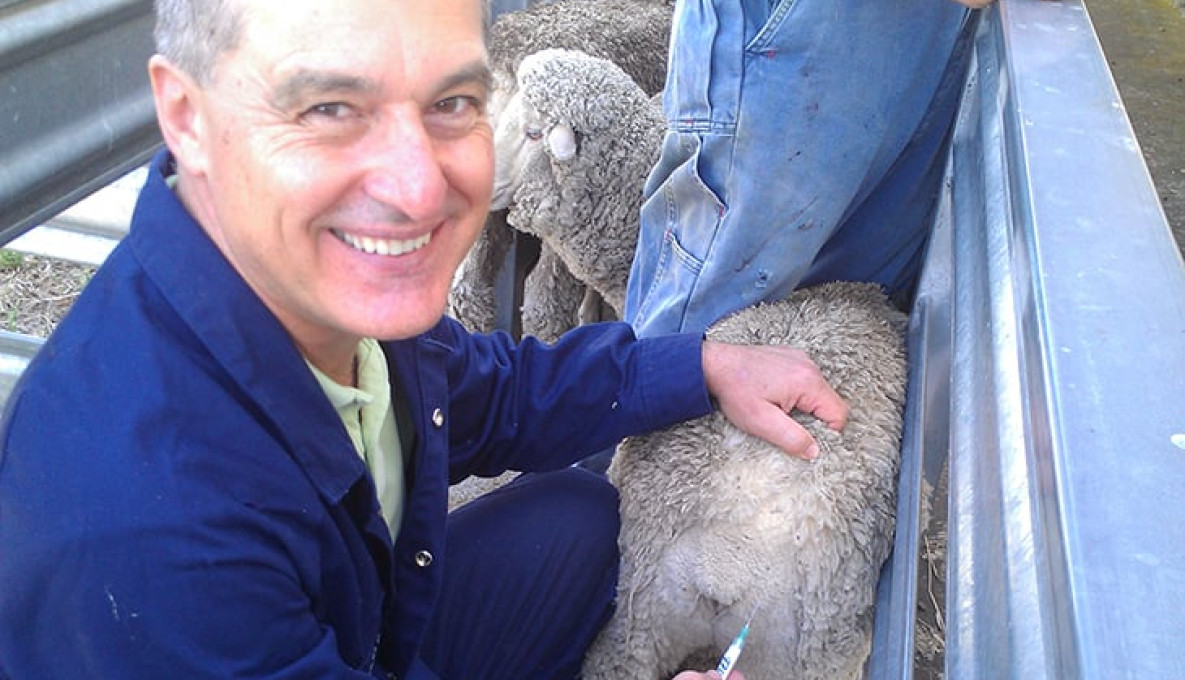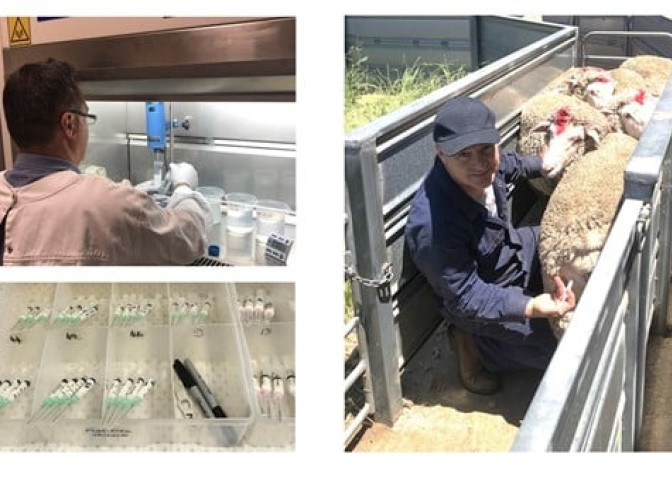
Vaccine researchers striking back against flystrike
Australian Wool Innovation is now two years into a major four-year preliminary research project to help develop a commercial vaccine that will protect sheep right across Australia from the Australian sheep blowfly. This $2.5 million collaborative project has achieved much in its first two years. Here, CSIRO project leader Tony Vuocolo provides woolgrowers with an update on his particular area of research on the project.

CSIRO is on the front foot in developing and testing potential vaccines to fight off the formidable sheep industry adversary, Lucilia cuprina, the sheep blowie. The battle plans and tactics have been formulated and an array of prototype weapons, ie vaccines, have been designed, produced and tested during the past 18 months with more in the pipeline.
Each prototype vaccine and approach tested is helping inform the next iteration of flystrike vaccine development. The process is precise and methodical and in the past 18 months, 26 different formulations of vaccine have been tested in sheep as well as in a variety of laboratory tests.
Whilst a potential commercial vaccine is still a way down the track, CSIRO’s results indicate they can produce high antibody levels in sheep against the blowfly. Antibodies are the defence molecules, akin to ‘bullets’ in general terms, produced by the sheep against the blowfly maggots. The major challenge faced is producing these ‘bullets’ in a form that will specifically hit the maggots in vulnerable spots and be powerful and plentiful enough to penetrate and ultimately over-run the maggots’ armour-like protection.
The blowfly proteins, called antigens, used in the prototype vaccines to generate the immune response in sheep against the blowfly are being produced using several different production systems. These include:
(1) isolation of proteins directly from blowfly larvae/maggots, also known as native antigens,
(2) production of blowfly proteins in bacteria,
(3) production of blowfly proteins in specially adapted insect cells.
In the last two cases the proteins are artificially produced and are called recombinant antigens.
Related organisations

Key points
Native blowfly antigens: Good and bad news
It has been demonstrated that some native blowfly antigens used in the vaccine are effective in producing an immune response in sheep that results in stunting of maggot growth and in some cases the immune response of the sheep results in the death of the blowfly maggot when they feed on the sheep serum. Serum is the component of blood that contains the antibodies.
Unfortunately producing a commercial vaccine through this approach using native antigens is not viable and that is the motivation for production of the blowfly antigens in bacteria or insect cells, and more recently by chemical synthesis.
Work continues on artificial production of blowfly antigens
The difficulty of the artificial production of blowfly antigens is being able to produce antigens in a form that replicates the precise three-dimensional structure of the native blowfly antigens. This is more easily performed with proteins that have simple structures but more difficult with complex proteins.
Several key classes of antigens being investigated have complex structures and additionally they are adorned with specialised sugar structures referred to as glycan The glycan on the antigen is like a costume disguising the underlying protein. The sheep antibodies must be generated that can recognise this masterful disguise to be able to direct an effective attack against the blowfly maggot.
Antigens produced via these artificial approaches have had varying degrees of success in the vaccine trials undertaken. The CSIRO researchers are investigating ways in which to optimise these antigen production systems to help produce better and more efficient prototype vaccines.

Alternative approaches and related research
CSIRO will continue to progress flystrike vaccine development during the next 12 months by working closely with its scientific collaborators. In the absence of a sheep blowfly cell line to artificially produce the vaccine antigens, CSIRO researchers will use the next best resource and test and validate a newly established fly-related cell line to produce vaccine antigens. CSIRO is partnering with the University of Queensland Protein Expression Facility to undertake this work. It is envisaged that this will assist in producing flystrike vaccine antigens that better resemble the native blowfly proteins.
CSIRO will continue to work with the University of Melbourne (UoM) flystrike team cross-referencing vaccine antigens with sheep blowfly population genome studies that UoM have performed. This provides information about blowfly population genetics and how this might impact vaccine design and optimisation for different Australian regions where the blowfly is found.
A collaboration with Griffith University Glycomics Institute is providing a clearer insight into the sugar structures found on the native blowfly proteins and is providing the opportunity to design and develop synthetic vaccines. These synthetic vaccines will be tested and if successful have the potential to bypass cell-based antigen production systems.
A study examining vaccine dose and the length of protection is nearing completion and is informing how CSIRO will formulate the future flystrike vaccine and how long the protective antibodies are maintained in the sheep. The ideal aim is to produce a vaccine that requires a single annual dose just before peak fly season.
Developing a pipeline for vaccine engineering and production is the key limiting factor if we are to be successful in development of a flystrike vaccine. Overall, the next twelve months will produce a strong statement on whether the development of a flystrike vaccine will ultimately be achieved.
CSIRO remains confident that if the right vaccine antigen production systems can be developed then an effective vaccine can be developed that strikes back at flystrike.
-crop-850x675.png)
Looking for engagement?
Showcase your commercialisation opportunity today.
Talk to our team to discuss how growAG. can connect your innovation to industry.
Have questions? Find answers to our most frequently asked questions on research projects, commercial opportunities, organisations and more.
